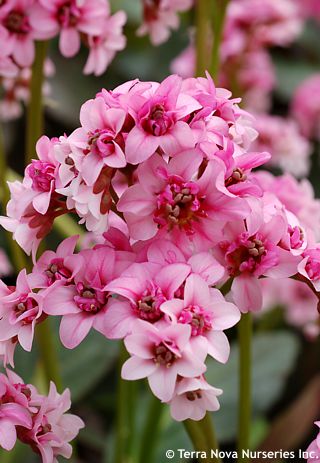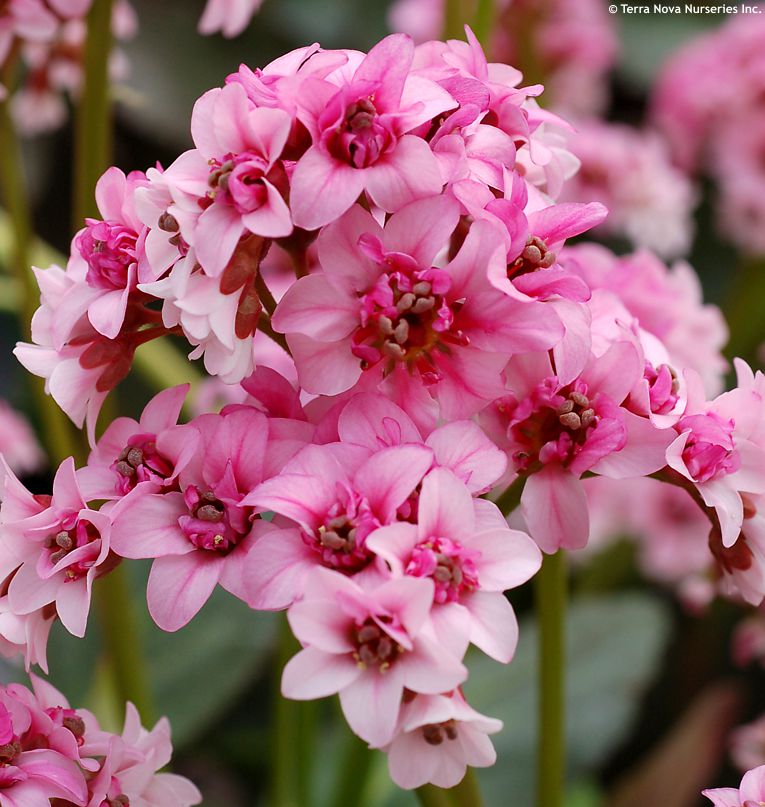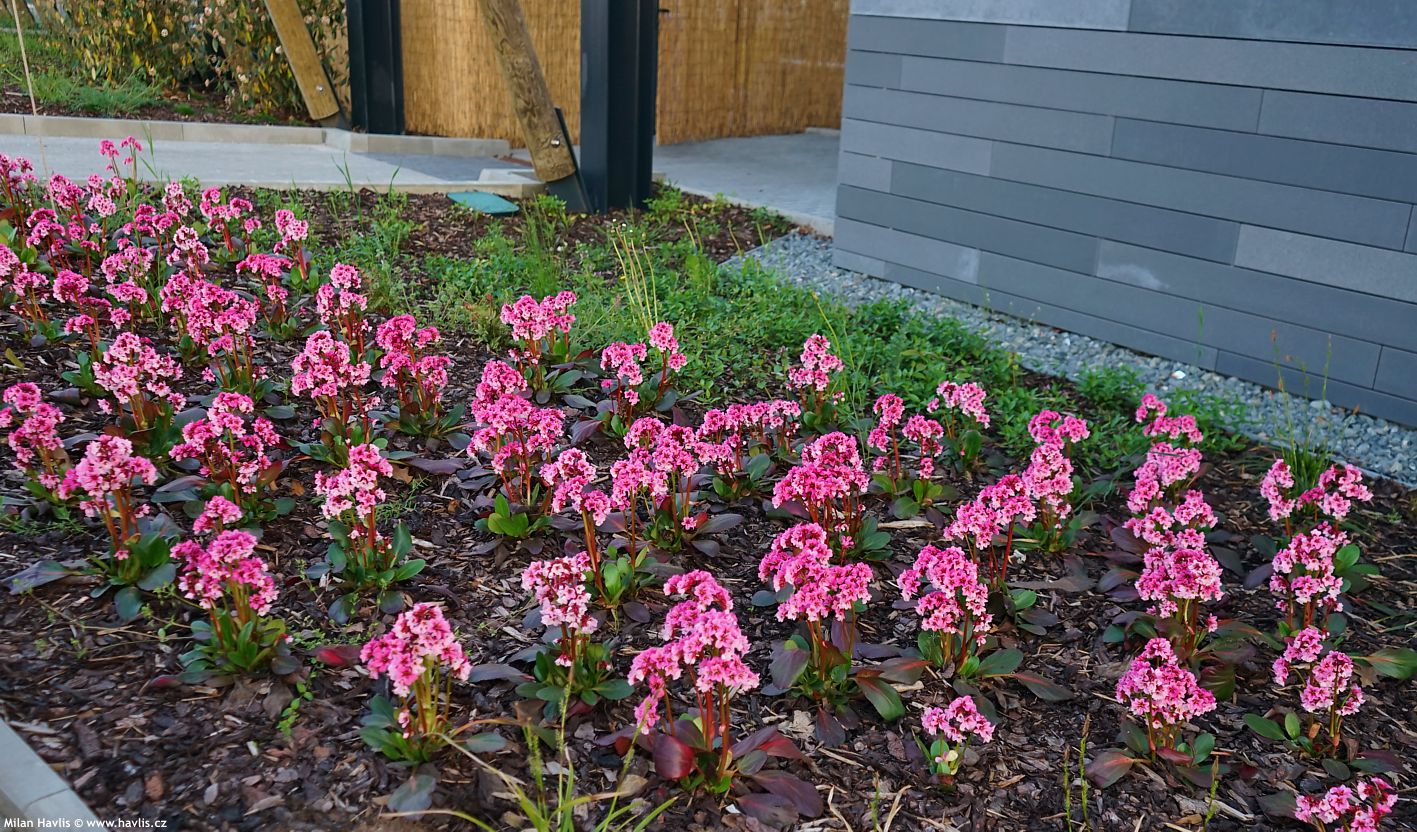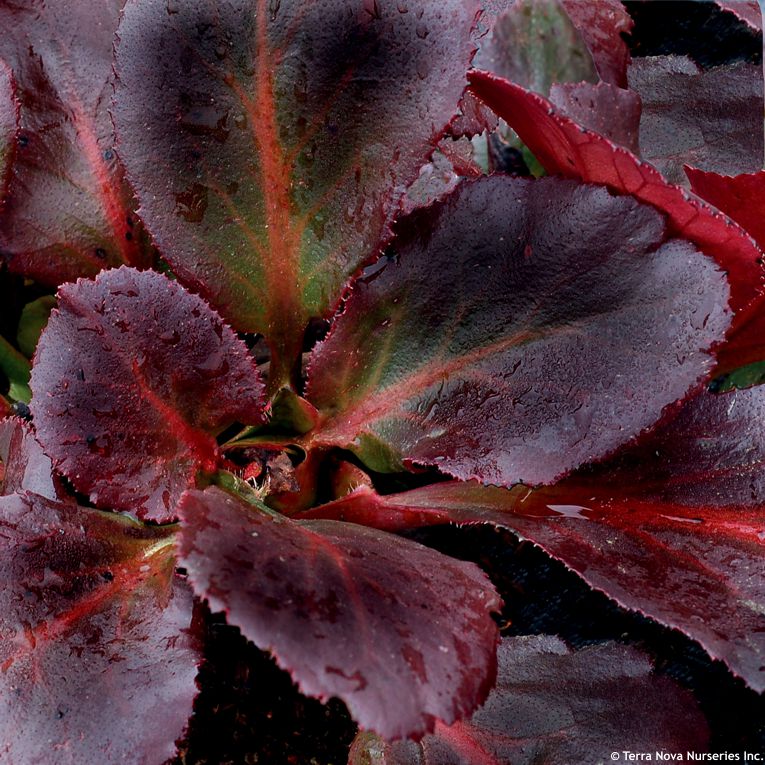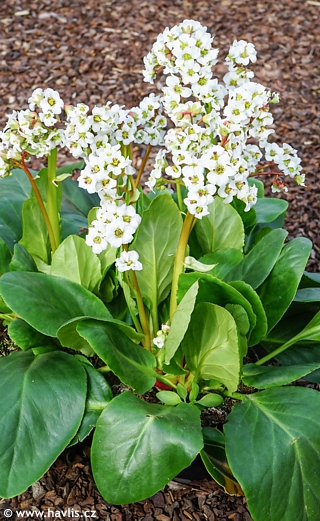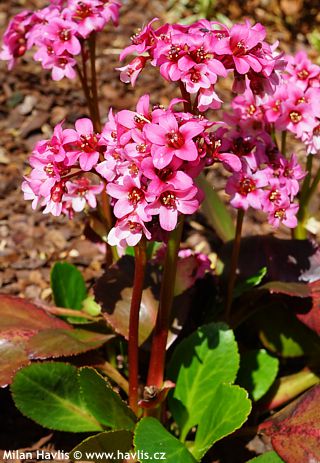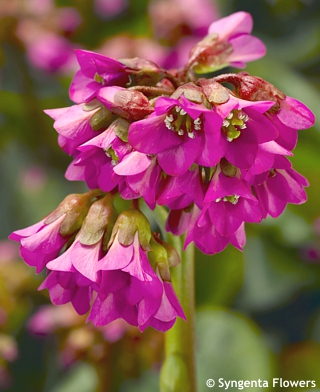Bergenia DRAGONFLY™ SAKURA elephant's ears, pig squeak
Bergenia
Elephant’s ears is a great name that best characterizes leaves of this perennial. They are truly shaped like real ears of baby elephants. Most varieties change their colour in autumn and winter adding extra interest to borders and beds, or making a winter window pot looking especially attractive, combined with dwarf conifers or small-leaved plants like hebes. Bergenia was described by German botanist Conrad Moench (1744-1805) and named in honour of another German botanist Karl August von Bergen (1704-1759).
DRAGONFLY™ SAKURA bergenia produces compact clumps with smaller leaves. From April appear numerous cherry-blossom coloured flowers in profuse trusses atop thick and fleshy stems about 30 cm tall. They combine pale and dark pink colours, just like Japanese Sakura trees. They are campanulate but open wide and not nodding. Flowering begins in late March or early April, lasts about 4-6 weeks and sometimes plants re-bloom sporadically during the growing season until October.
Leaves are smaller than those on b. cordifolia species. They are evergreen, leathery, broadly oval, dark green with prominent maroon hues. They are very showy and thanks to the fact that they are evergreen Bergenia is a valued plant in public landscapes and in containers in front of cafes and restaurants where plants must look all-year-round.
Bergenia is a spreading, ground covering perennial with tough rhizomes. It likes moist but well-drained soil, rich in humus but will grow in almost any soil. Growing it in full sun will guarantee profuse flowering and richer foliage colours in autumn and winter. Avoid areas with constant drying winds. Its hardiness is at least -34°C (USDA zone 4), yet it benefits from mulching.
Last update 29-05-2022

































